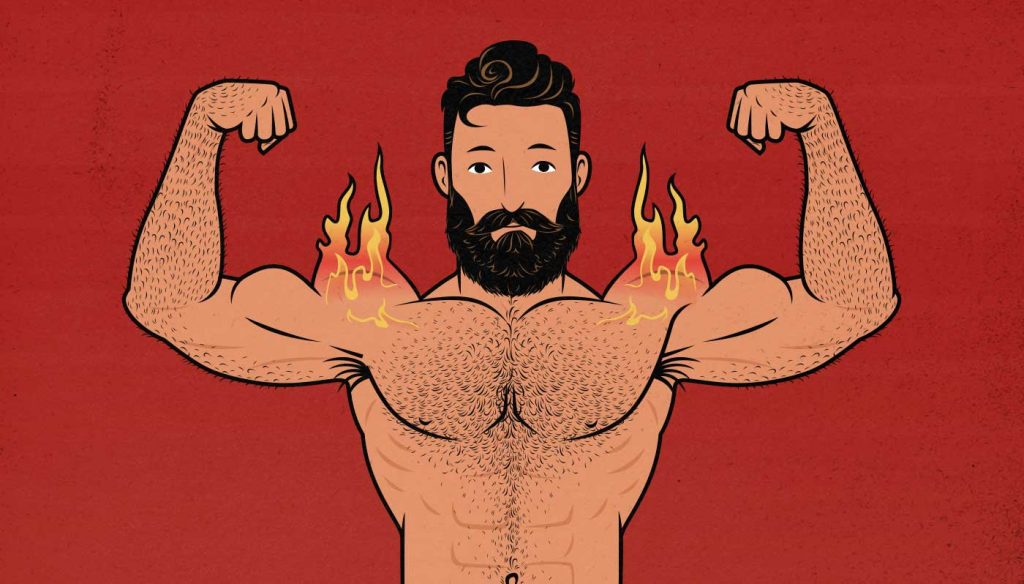
The Best Lifts for Building Broader Shoulders
We’ve already written an article about how skinny guys can build broader shoulders over on Bony to Beastly, including a bunch of neat information about genetics, aesthetics, and hypertrophy training in general.
In this article, I want to talk about how a more intermediate lifter can build broader, wider shoulders. Lifters often have a fairly easy time building bigger front delts from bench pressing and overhead pressing, but it’s common for guys to have trouble building bigger side delts, which is what will make their shoulders broader, giving them a greater shoulder-to-waist ratio.
So in this article, let’s talk about the three best lifts for building bigger side delts and how to get the most growth out of them.
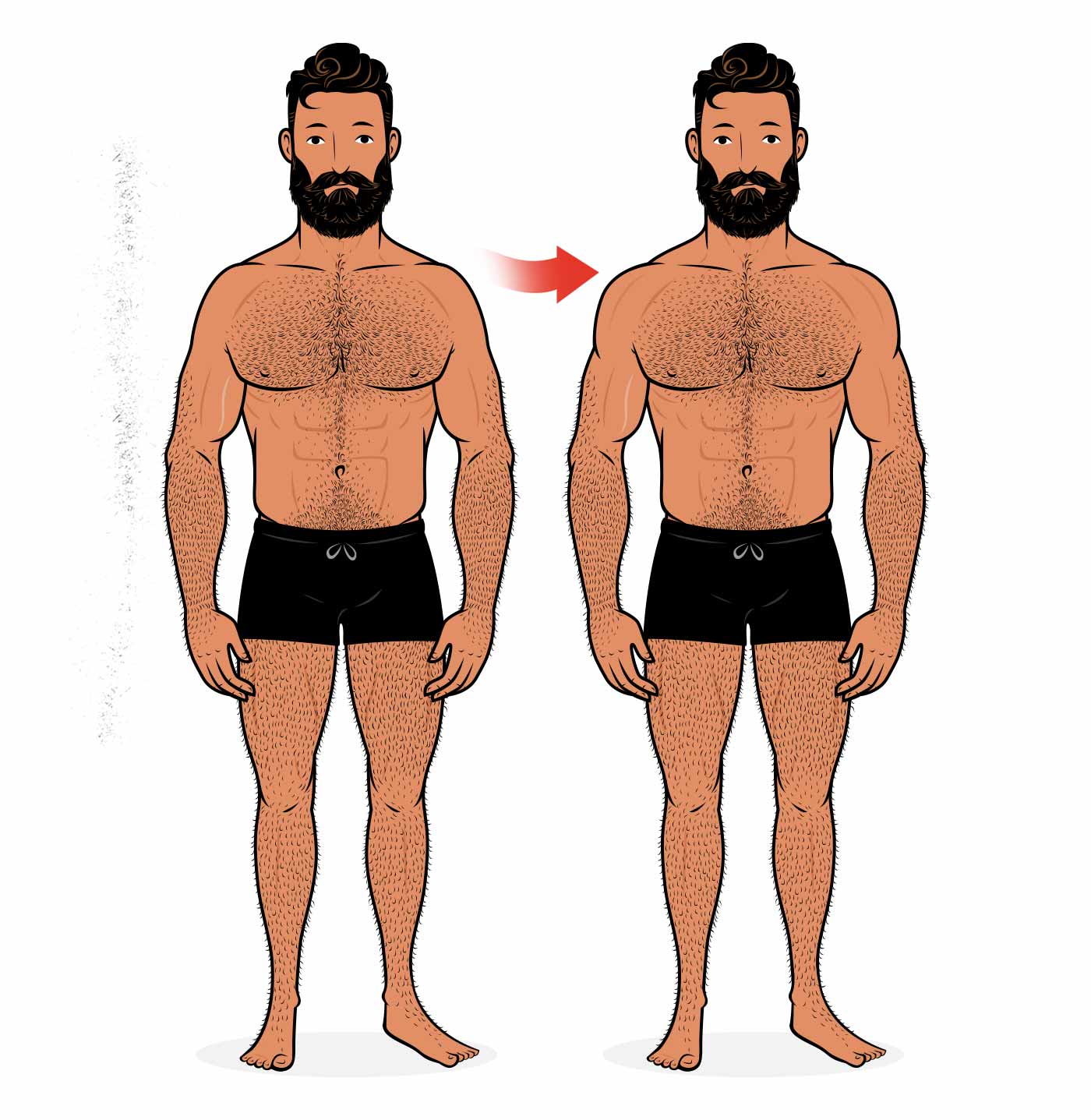
How to Build Broader Shoulders
There are quite a few lifts that work our shoulders, ranging from the close-grip bench press (for our front delts) to the chin-up and barbell row (for our rear delts). And that’s great, but these lifts help us build bigger shoulders, not necessarily broader shoulders.
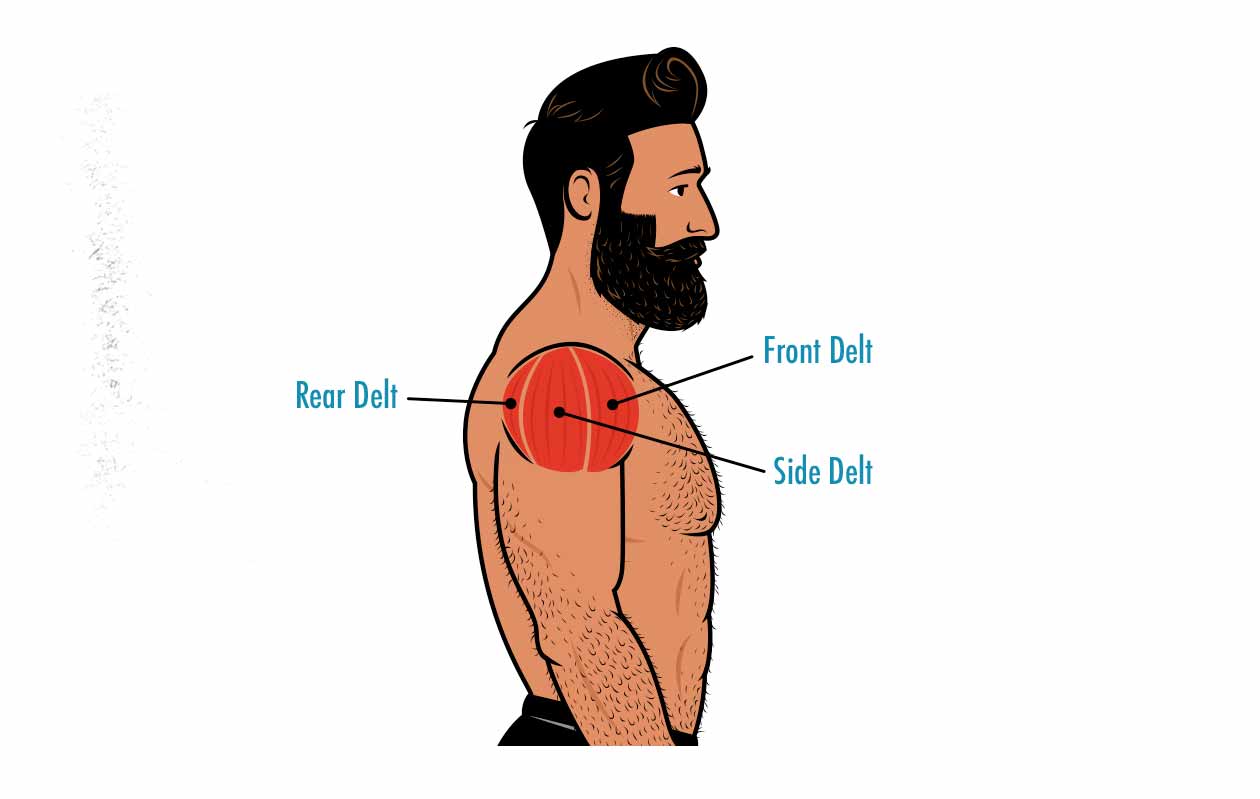
If we’re talking specifically about building broader, wider shoulders, then we’re talking about the side delts, which often aren’t very well activated by the big compound lifts, and tend to lag behind. There are only a few lifts that work the side delts:
- The Overhead Press (Main Lift)
- The Upright Row (Assistance Lift)
- The Lateral Raise (Accessory Lift) <= this is the key
There are several variations of each lift, and each has some nuance to it. Furthermore, the shoulders are a tricky joint, and not everyone will be able to perform all three movements without aggravating their shoulders (i.e. shoulder impingement). So we don’t necessarily want to use all three. Not yet, anyway. Rather, we want to find the best lifts for you as an individual.

The good news is that our shoulders have tremendous potential for growth, and of all your measurements, your shoulder circumference will likely see the biggest improvement as you build muscle. In my own case, I went from having 39″ shoulders to 52″ shoulders as I bulked up from 130 to 195 pounds.
The Three Best Side Delt Lifts
The Lateral Raise
How to Do Lateral Raises
There are a few different ways to do lateral raises. The classic technique has you standing and raising dumbbells out to your sides. That’s a good way of doing them, but you can make them even better by making your lateral raises harder at the beginning of the range of motion.
Here’s a quick tutorial video where I explain the different variations and how to do them:
Muscles Worked by the Lateral Raise
The lateral raise is often thought of as a side deltoid isolation lift, and there’s some truth to that—it does work our side delts. However, as with all other side delt lifts, the lateral raise also works our upper traps.
Our upper traps tilt our scapulae up, and our side delts raise our arms out to the sides. This same thing happens in the overhead press and the upright row. There’s no getting away from it. And that’s good. After all, our upper traps improve our general strength and appearance even more than our side delts do. The more we can bulk up our traps (and neck muscles) the stronger we’ll be and the better we’ll look.
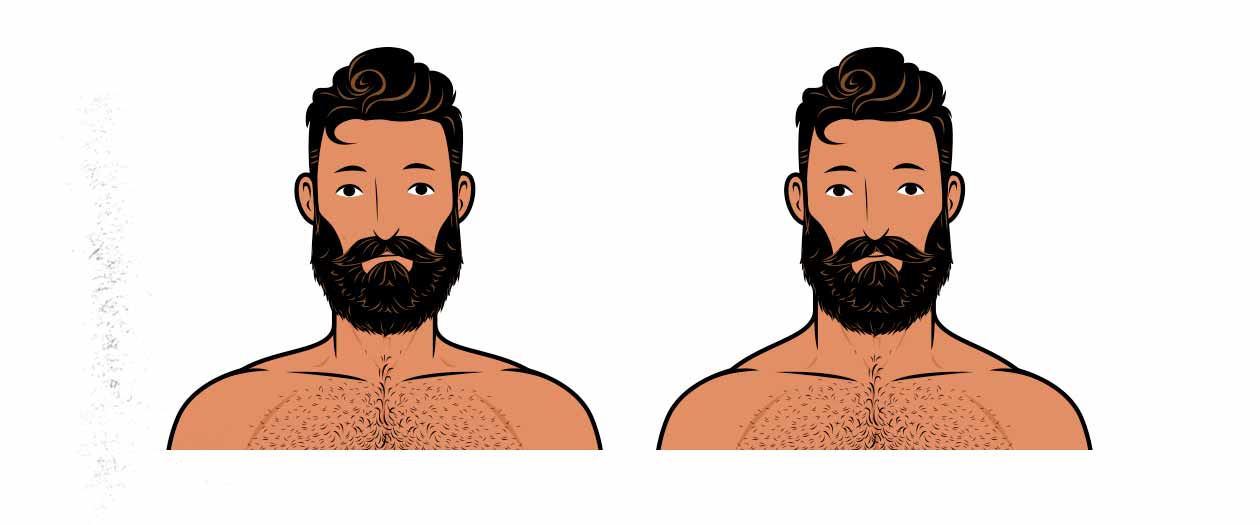
Even so, some people try to do lateral raises in a way that takes the traps out of the lift, but not only are they likely to fail, but they’re just going to make the lift less comfortable, worse for building overall muscle mass, and less great for improving their appearance. A better approach is to simply make sure that you can also feel your side delts working.
Fortunately, there’s no possible way for our traps to raise our arms out to the sides. All our traps do is shrug our shoulders up (tilting our scapulae). That’s part of the movement, but the main part of the movement is raising our arms out to the sides, and our side delts are the only muscle that can do that.
The good news about lateral raises is that they’re easy to set up, easy to do, easy on our shoulder joints, and easy to recover from. This makes them a great lift for beginners and a great lift for people with cranky shoulders.
The Best Rep Range for Lateral Raises
The lateral raise is a small isolation lift that suits lighter sets of 10–30 reps. If you’re having trouble feeling your side delts working, you might want to use sets of 20-30 reps to work on your mind-muscle connection. By default, I recommend 2–4 sets of 10–15 reps done 2–3 times per week.
Drop Sets for Lateral Raises
The lateral raise is a smaller lift that isn’t very metabolically taxing. We can string sets together with minimal rest periods without much risk of our central nervous system or cardiovascular fitness becoming our limiting factor. This makes it a great doing drop sets.
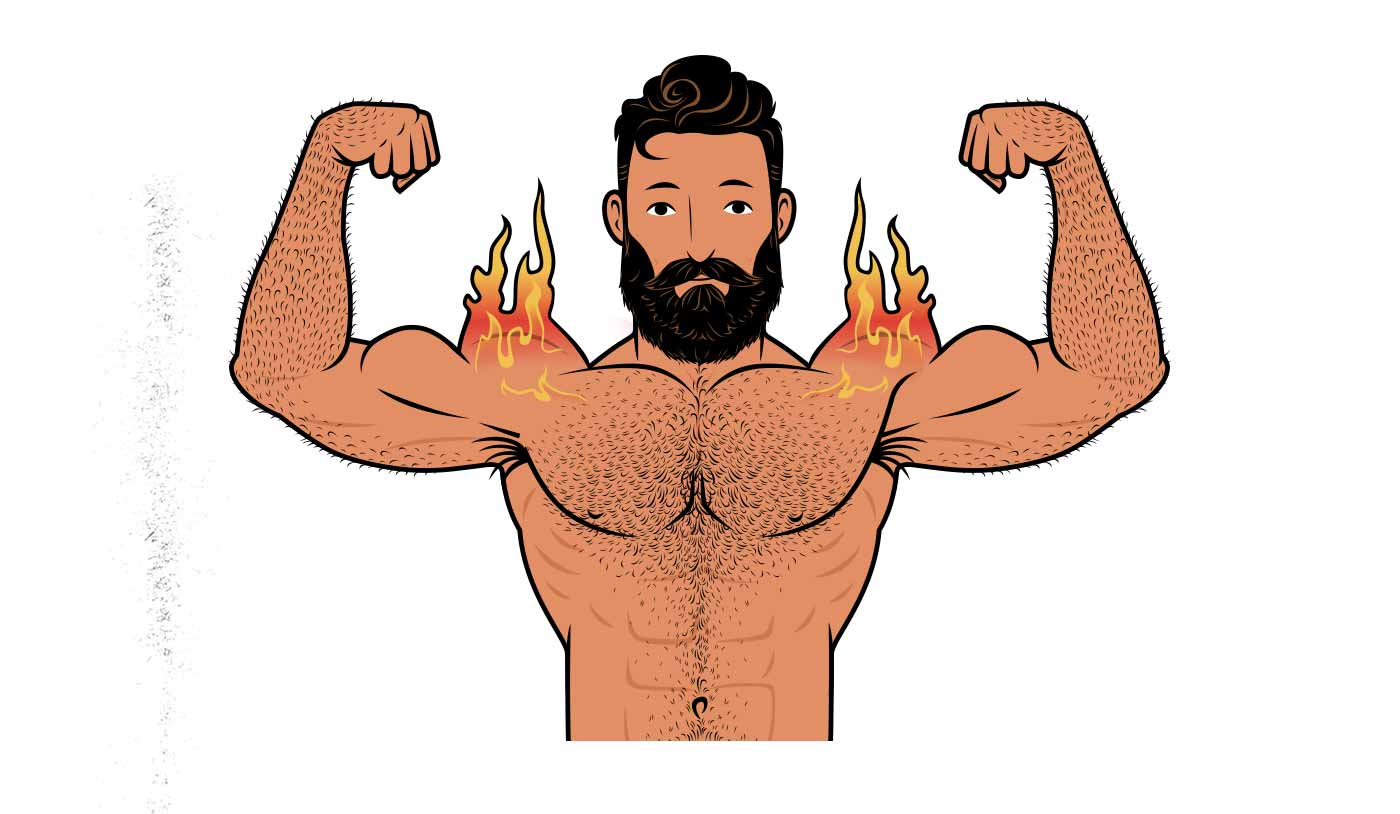
To do drop sets, start with a weight you can do 10–30 reps with, do a set, strip off around 30% of the weight—you don’t need to be precise—and then immediately do another set. Keep stripping off the weight as many times as you like, perhaps even until you’re flapping empty arms.
If you’re doing lateral raises with fixed-weight dumbbells, for example, you might jump from 25 to fifteen to ten to five-pound weights.
The Overhead Press
The overhead press is done by pressing a weight vertically overhead. It can be done from a standing or seated position with either dumbbells or a barbell (or even a kettlebell or log). The standing variations tend to be best for our spines and torsos, but for building broader shoulders, all variations are great.
Here’s a quick tutorial video of Marco teaching the overhead press:
Muscles Worked by the Overhead Press
The overhead press is the big compound lift that’s dedicated to bulking up the fronts and sides of our shoulders, along with our upper chests, upper traps, and serratus anterior muscles.
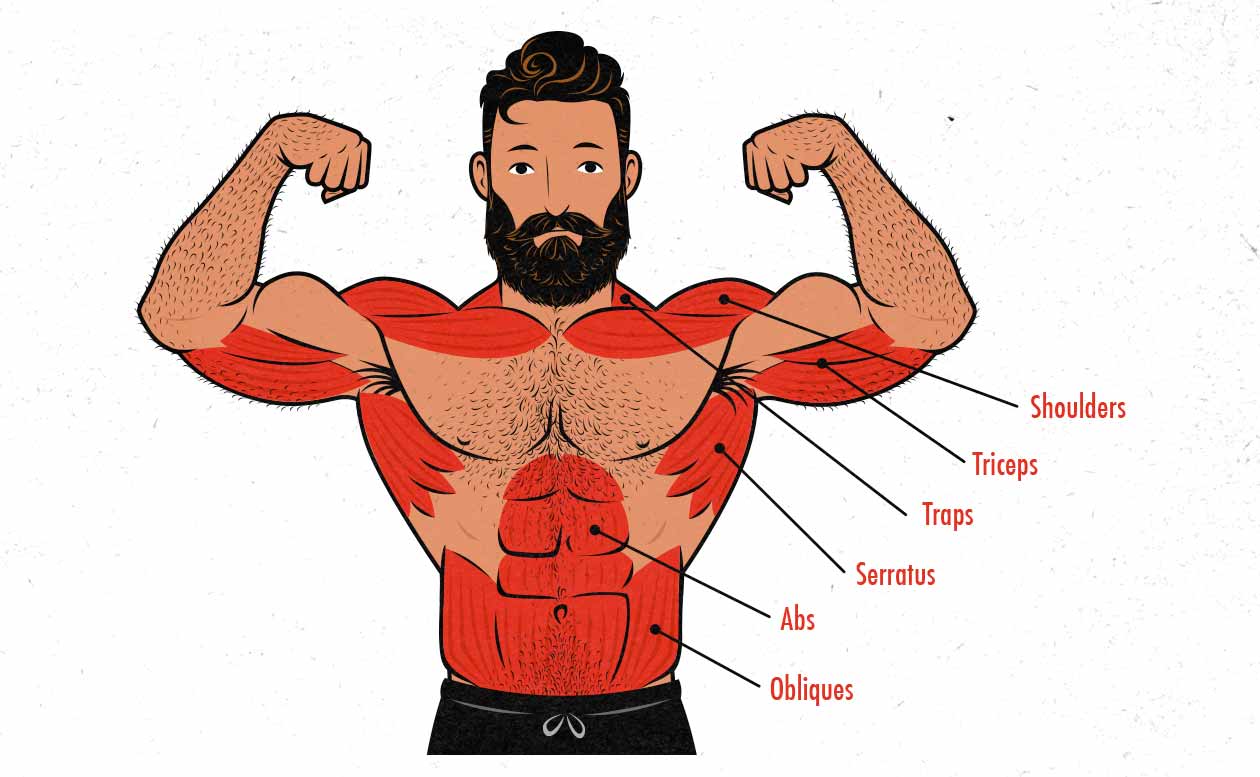
As you can see, it’s a big lift that engages a ton of overall muscle mass. The fact that it bulks up our upper chests, shoulders, and traps makes it a great lift for improving the muscularity of our entire shoulder girdle, making it perhaps the single best lift for improving our appearance. It also, of course, trains our side delts. It will help us build broader shoulders.
Picking the Best Overhead Press Variation
The catch with the overhead press is that it requires quite a strong core and quite a lot of shoulder mobility to press a weight overhead without arching in the lower back and letting the ribs drift up. When that happens, especially if you’re lifting a heavy barbell, it raises the risk of hurting the lower back. It’s quite a safe lift when done correctly, but not everyone can do it correctly. At least not right away.
If you’re having trouble doing the standing overhead press, you could do them seated, but that can actually put more pressure on our spines—specifically the tail bone—since the load isn’t being buffered by our lower bodies anymore. Still, some people find that it helps.
A better solution, we’ve found, is to use the half-kneeling dumbbell overhead press. We can stimulate a similar amount of growth in our shoulders, but the load is much lighter, reducing the risk of hurting our lower back. The kneeling split-stance also makes it easier to do the lift with good posture. After a bit of practice, most people can then shift to doing the standing overhead press—again, using just a single dumbbell at a time.
When dumbbell overhead pressing becomes easy, you can progress to the barbell. Or not. Dumbbells are just as good. It’s entirely up to you.
The Best Rep Range for the Overhead Press
As a general rule of thumb, the hypertrophy rep range is anywhere from 4–40 reps, with 5–30 reps being slightly more practical and 6–20 reps being the easiest of all.
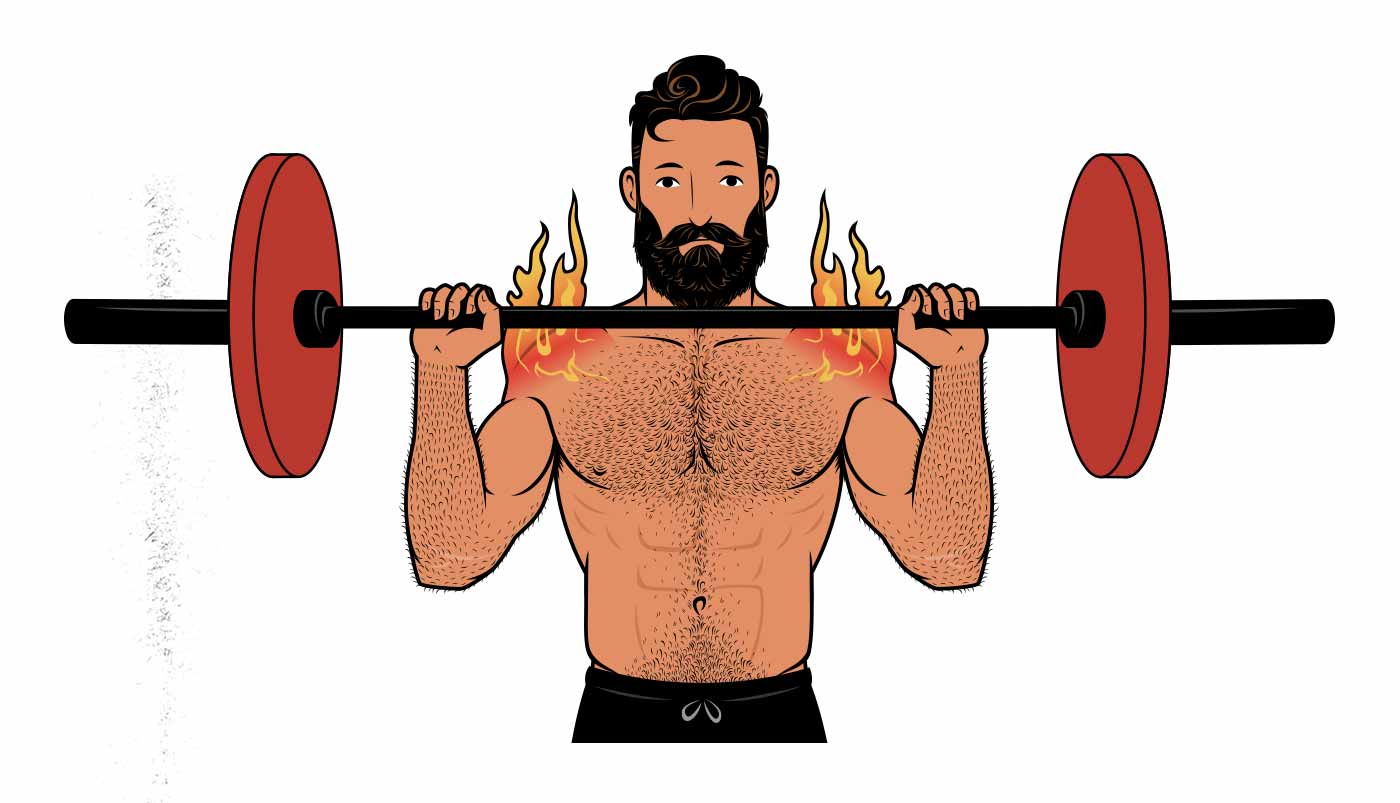
More specifically, the barbell overhead press is a big compound lift that suits heavier sets of 5–10 reps. Interestingly, though, many people find that going above ten reps is easier on their front delts and traps but harder on their lateral delts, which in this case, is exactly what we want. This gives us a few options:
- 3–5 sets of 5–10 reps: to treat the overhead press as a big compound lift that bulks up our shoulder girdle overall. Afterwards, we can focus specifically on our side delts with upright rows and lateral raises.
- 2–4 sets of 10–15 reps: use the overhead press as a lighter lift that emphasizes our side delts. And if you’re already doing the bench press, especially with a closer grip, then your front delts will be taken care of anyways.
- Three pyramid sets of 5, 8, and 12 reps: if you use pyramid sets, doing a heavy set followed by progressively lighter sets, you can get the best of both worlds. It won’t necessarily yield more overall growth, but it may yield more balanced muscle growth. This will also let you see which rep range you prefer.
If you’re using dumbbells, slightly lighter sets of 8–15 reps tend to work better. That way you aren’t wasting too much effort swinging the weights into position and balancing them as you press them upwards.
The Upright Row
Upright rows are a great compound accessory lift is one of the very best lifts for building broader shoulders and for improving our overall aesthetics. However, they’re also finicky and surprisingly controversial, with some people finding them uncomfortable and the more fearful experts advising against ever doing them.
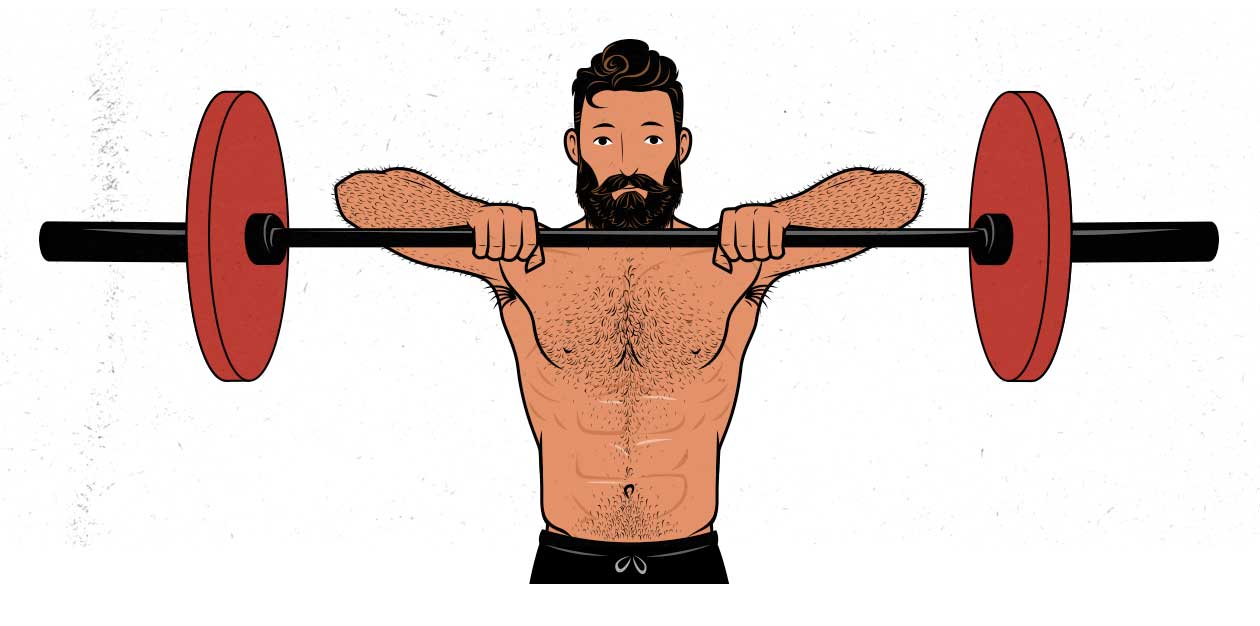
Muscles Worked by the Upright Row
The upright row works the forearms, upper arms (elbow flexors), upper back (traps), and shoulders (side and rear delts). The limiting factor is often our side delts or traps, and so they tend to get the best growth stimulus.
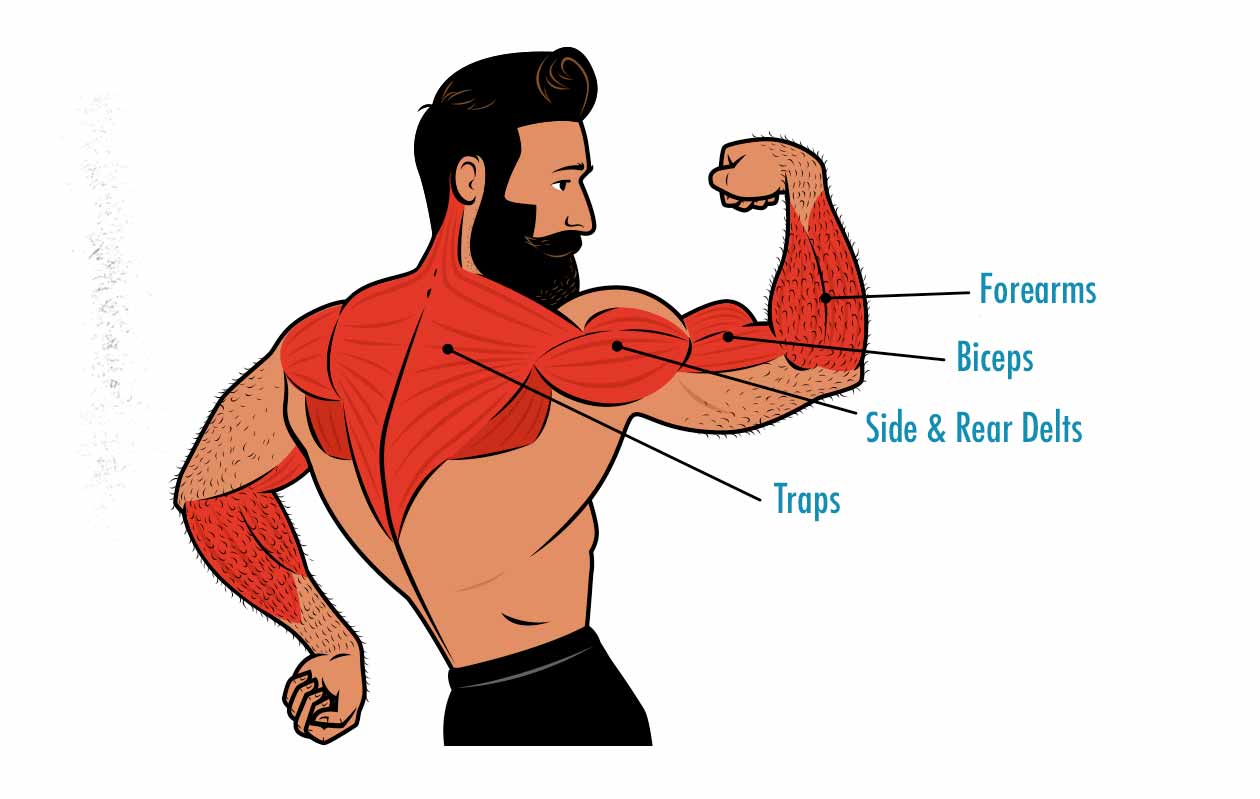
Even just looking at this image, it’s easy to see why many bodybuilders swear by the upright row for improving the aesthetics of their physiques. But it’s also an atypical movement pattern, and some of the more cautious lifters worry that it might hurt their shoulders.
Are Upright Rows Dangerous?
Upright rows are infamous for causing pain and inflammation in our shoulder joints (shoulder impingement), especially when we try to force a technique that doesn’t feel natural. However, these issues rarely sneak up on us. Rather, it’s like water torture, where repetitively doing a lift that’s slightly painful cause damage to accumulate.
If upright rows grind your shoulder joints or cause sharp pain, you can either adjust your technique or stop doing them, preventing the inflammation from ever progressing into a problem.
But if upright rows don’t hurt your shoulders, then there’s no reason to think they’re doing any damage. In fact, our bodies adapt to weight training by growing both stronger and tougher, and that includes our muscles as well as our joints and connective tissues. If we can find a way to do upright rows in a way that feels good, that area should grow more robust.
Safe Upright Row Technique
All of our shoulder joints are a little different, and so there’s no single correct way to do upright rows. Start with a shoulder-width grip, but experiment going both narrower and wider. Pull as high as you can comfortably pull, focusing on raising your elbows out to the sides, but stop before you feel any grinding in your shoulder joints. Some people can only bring the barbell to shoulder height, and that’s fine, but many people can go a bit higher. With a bit of experimentation, most of us can find a way to make upright rows feel great on our shoulder joints and muscles.
Since everyone benefits from slightly different grip widths and ranges of motion, one common issue with the upright row is being so inconsistent from workout to workout that it’s hard to progressively overload our muscles. When you find a grip width and pull height that works for you, make a note of it and stick with it for at least a full training phase (3–6 weeks). Then, provided that you’re being consistent from workout to workout, feel free to vary your technique from phase to phase. That might help spur on a new wave of muscle growth, and it will give our shoulder joint a break from experiencing the exact same strain over and over again, allowing it to fully recover and adapt.
Upright Row Rep Range
The upright row is a small compound lift that suits moderately heavy sets of 8–15 reps. If you’re having trouble finding a comfortable technique, erring on the higher side of that rep range can help, but if the lift feels comfortable, feel free to drops as low as eight reps per set. 2–4 sets per workout often works well.
Stubborn Side Delts That Won’t Get Sore
The trickiest thing about building broader shoulders is that the side delts are small muscles that are hard to feel working and that rarely get sore, even when you’re training them properly and even as they’re growing. This can make them seem like they’re stubborn muscles, and sometimes they are.
Lateral raises and upright rows done in higher rep ranges (15–30) should allow you to feel your side delts working if you fix your technique and practice building a mind-muscle connection. But remember that only your shoulders can raise your arms out to the side. So if you make sure that your front delts aren’t doing the work, your side delts will be forced to do it.
The even bigger problem is that side delts are quite resistant to delayed onset muscle soreness, which can make it hard to figure out if you’ve trained them hard enough. So it’s not necessarily a problem if your side delts aren’t getting sore. In fact, to get them sore, you may need to do an absurdly high training volume—perhaps too high. A better way of gauging progress in the short term is to see if you’re getting a little bit stronger from workout to workout, adding reps or weight to your lateral raises.
Summary
A good hypertrophy training routine should already include some bench pressing and overhead pressing, which is great for building up our front delts. And it should include some chin-ups and rows, which are great for building up our rear delts. To build broader shoulders, though, we need to build bigger side delts. Unfortunately, the big compound lifts aren’t always the best for bulking up our side delts, and so they often lag behind.
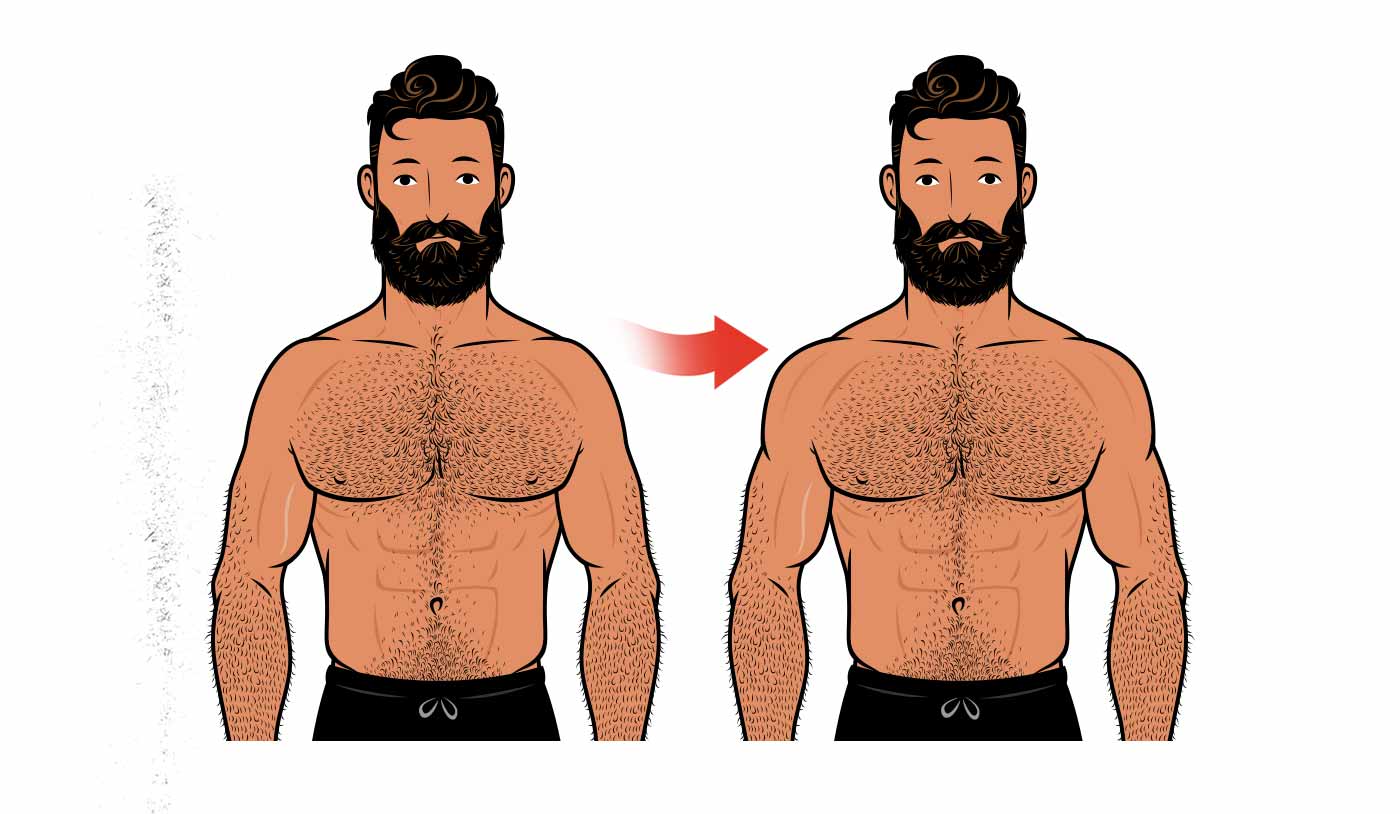
The three best lifts for bulking up our side delts are:
- The overhead press, especially when doing for ten or more reps.
- The upright row, although we need to make sure they feel comfortable on our shoulder joints.
- The lateral raise, which is perhaps the single best lift for speeding up side delt growth.
If your routine already includes some overhead pressing, you could try adding in a set of twelve after you finish your heavy sets.
If you can find a way to comfortably do upright rows, you can do a few sets of 8–15 reps per week, adding even more volume for your side delts.
But most of all, if your side delts are lagging behind, then lateral raises are the way to catch them up. It’s normal to feel your traps working, but if you have trouble feeling your side delts doing their share, then it’s worth spending some time doing lateral raises in higher rep ranges (20–30 reps) and working on building a mind-muscle connection. If you can do that, then feel free to move into lower rep ranges afterwards (10–20 reps).
The good news is that once you get good at doing lateral raises, they’re so quick and easy to recover from that you could even add a few quick drop sets to the end of every workout, boosting your side delt training volume much higher with just a few extra minutes of lifting per week.
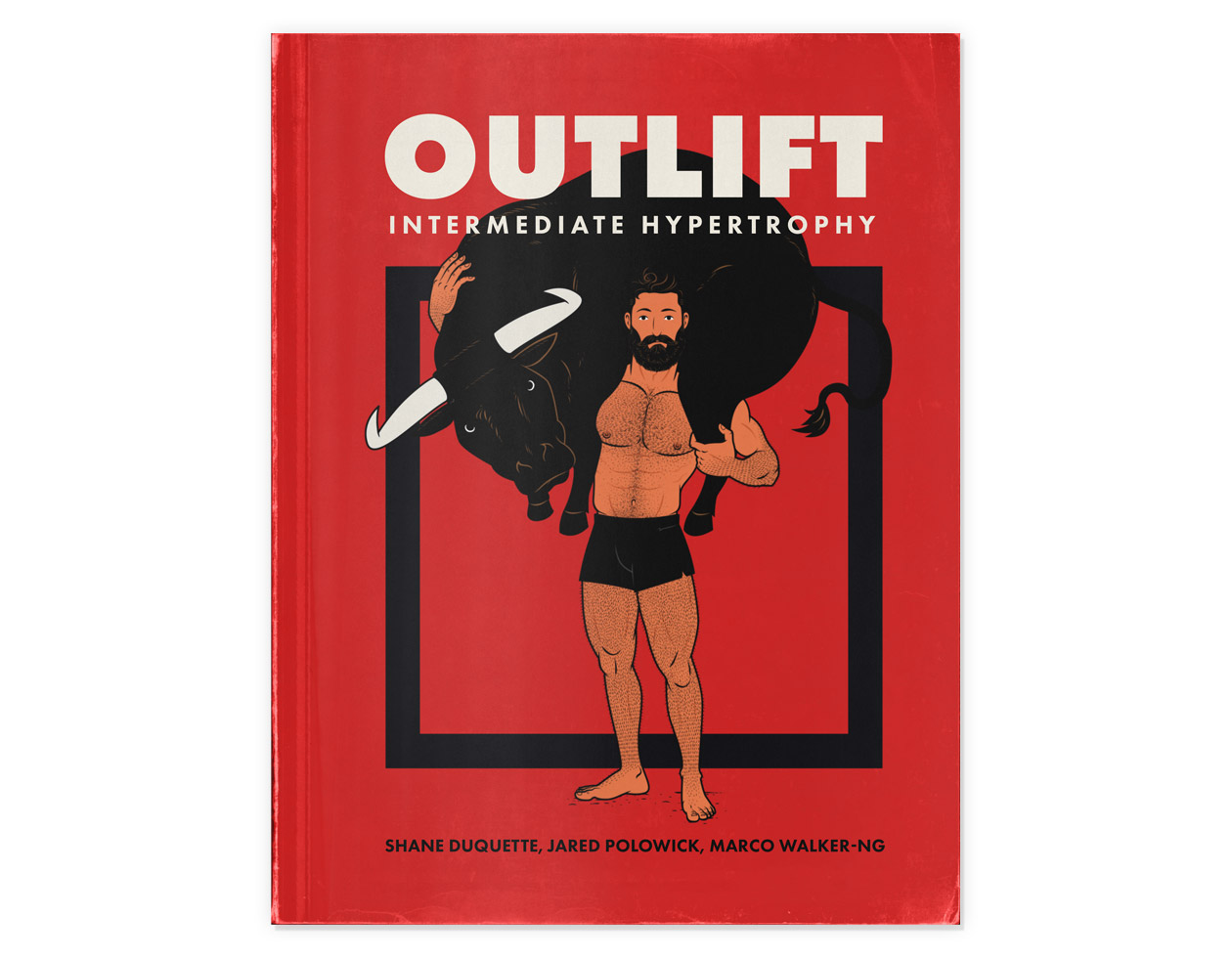
If you want a customizable workout program (and full guide) that builds these principles in, then check out our Outlift Intermediate Bulking Program. We also have our Bony to Beastly (men’s) program and Bony to Bombshell (women’s) program for beginners. If you liked this article, I think you’d love our full programs.



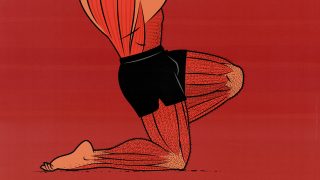

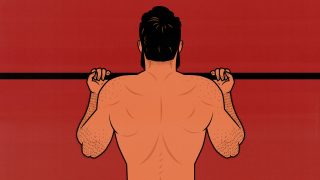

Hi Shane, What do you think about behind the neck overhead press with barbell or Smith machine? Is it a good option for side delts for those people who can do this lift without bothering their shoulders? Is this good for side delts?
I’m more a fan of lateral raises. For a compound lift, upright rows can be good for people when it doesn’t bother their shoulders. I’m not sure about the behind-the-neck overhead press. Maybe?
These articles are fantastic. Information-dense and well written.
Thank you so much, David!
Most emg studies that have made the comparison show that the best exercises for the rear delts / mid traps are also the best or nearly so for the lateral deltoids and supraspinatus. This means something like chest-supported incline rows or chest-supported incline rear delt raises are nearly as good for the lateral delts as lateral raises, and much better than overhead press.
Since the best upper chest movements (semi-hammer grip incline DB press, for instance) are nearly as good for the anterior delts as more “pure” anterior delts movements, we could take the minimalist approach to building our entire shoulder girdle by combining upper chest with rear delts (something like DB incline press with DB chest-supported incline rear delt raises).
Your article here suggests that lateral delts would be neglected with such a routine, which is not true.
Hey Joseph,
I don’t think the article implies that you NEED lateral raises to build bigger shoulders. It’s also not an article that’s trying to be minimalist. The article is about how to build BROADER shoulders, and the most effective lift for that is the lateral raise. That isn’t to say that lateral raises are the only way to do that, just that if your main goal is building broader—aka wider—shoulders, then lateral raises are generally the best exercise for it.
I think your routine sounds great 🙂
Wow, really good article. I’m glad I found this site. Keep it up, guys. Thanks for the info.
Our pleasure, Orgio! Thank you 🙂
Hey Shane and Marco,
Good stuff. I have read and taken in what you have said and can see what you are saying, especially because of the way you explained it. Having a message is only as good as how well you are getting it across to someone else. In other words, it doesn’t matter if you have something to say if the hearer doesn’t understand what you are trying to get across to them.
To me, you have explained it well, and gotten the message across. This is more valuable than having something to say, but not quite able to make it understandable to the listener.
Well done, and thank you for the knowledge.
Bruce,
Australia
Thank you so much, Bruce 🙂
Thank you for the article.
Upright rows are a no-no. They impinge the shoulder joint and will do damage over time. The same goes for behind-the-neck presses or even pulldowns behind the neck. I have been weightlifting for over 30 years and have seen these old methods go out the window, and rightly so.
Hey Michael, my pleasure!
Lifting weights causes micro-tears in our muscle fibres. With a good workout program, though, this repeated stress doesn’t cause damage to accumulate, it causes muscle growth. It’s the same with a lot of these things. Stressing our bones can make our bones stronger over time. Stressing our tendons can make them stronger over time.
With that said, we don’t recommend lifting through joint or tendon pain. If upright rows hurt your shoulders, no problem—choose a different variation instead. There are a lot of great lifts to pick from. Pick the one that suits your body best.
I agree that pressing from the chest and pulling to the chest often works quite a bit better than going behind the neck. Most people find that range of motion works better for their joints.
Upright rows are fine for most people, though. If they hurt your shoulder joint, I agree. Don’t do them (at this point in your training). But if they feel fine, there’s no reason to think they’re causing damage that’s accumulating over time.
Thanks for the great article. I no longer do any overhead pressing due to a shoulder impingement from going heavy for years. My main go to exercise for shoulder width are cable side lateral raises with lots of volume, up to 6 sets per workout. My joints are feeling better than ever and no pain. I have found attaching an ankle strap to my wrist takes the hands and forearms out of the movement and solely places the emphasis on the side delt.
That’s awesome Iain. Lateral raises are great, and your variation sounds pretty cool. Seems like a good solution to your problem 🙂
Awsome article, got to the point quickly and allowed me to get some reps in and then had more information for digesting later!!!
Hey Outlift, what’s up? This really was a super dope blog post, thanks so much. I was able to learn like so much about all of the heads and portions of the shoulder but more about building them for a broader look. I’ve
been checking out Outlift’s and
Bony to Beastly’s workout blogs and pages on getting muscular, but this one’s definitely the truth. On every page, especially one’s like this on shoulder hypertrophy, I really peep the cool animation of that dude with the beard. How you guys write and present the information is just so so chill and cool too. I can’t wait to combine the lean bulking tips and tricks with some lateral raises and over head pressing, lol.